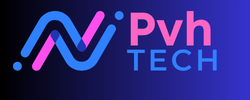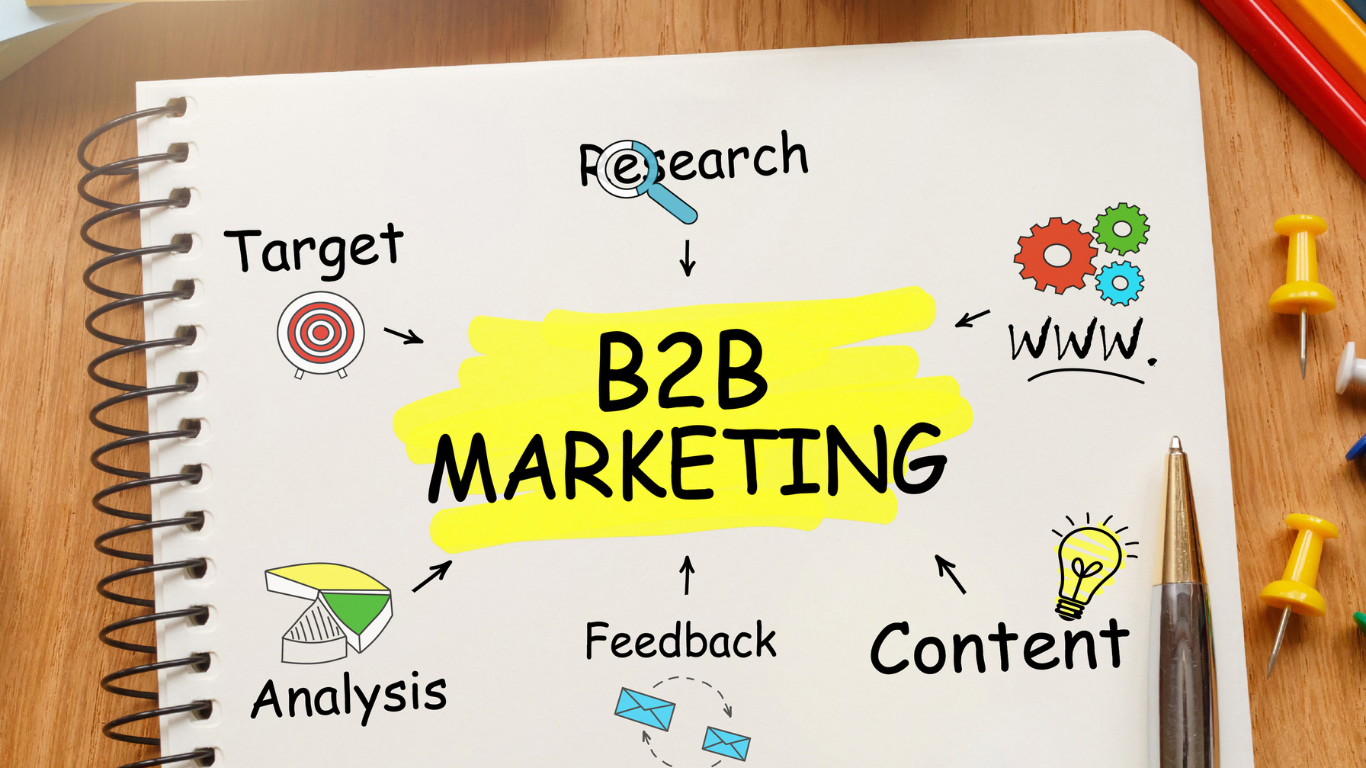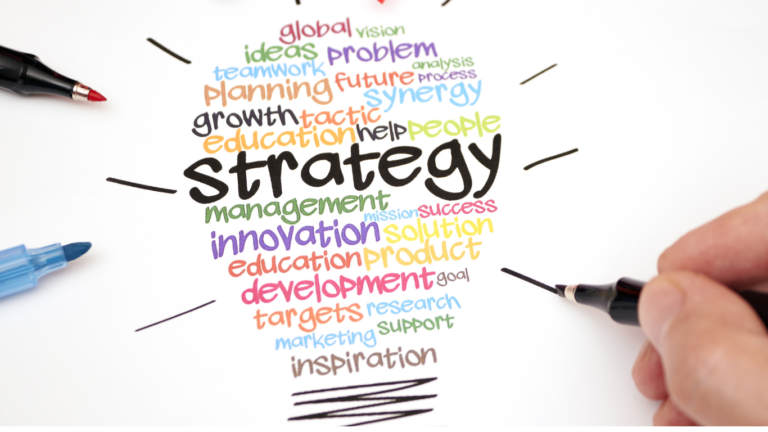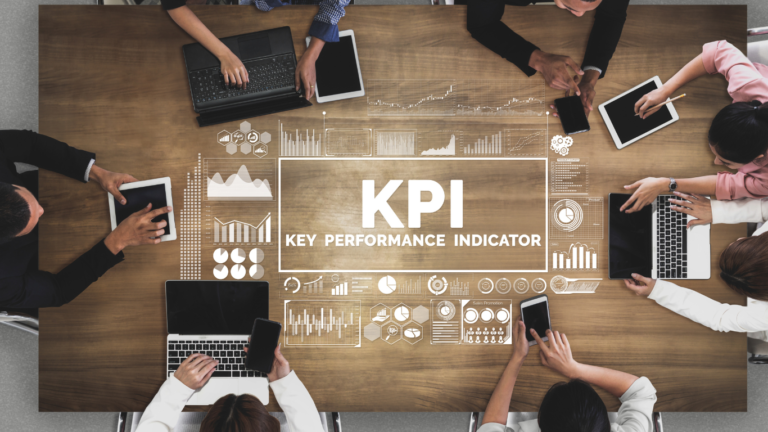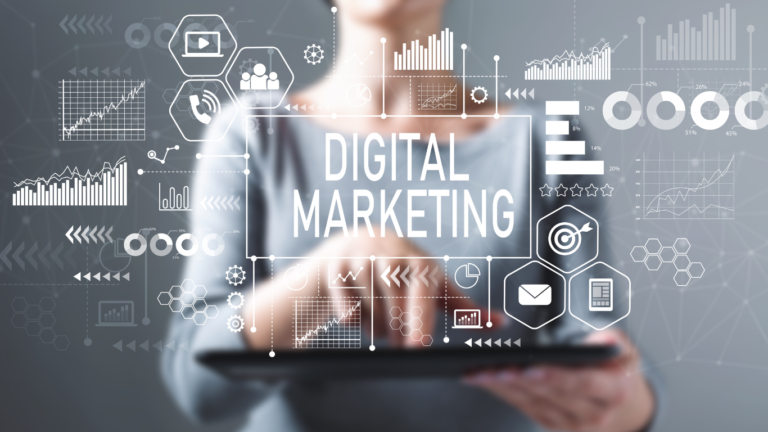Maximizing Audience Retention: Strategies for Effective B2B Marketing in 2024
Introduction
In the rapidly evolving landscape of B2B marketing, staying ahead of the curve is essential for businesses to thrive. As we navigate through 2024, the dynamics of B2B marketing are undergoing significant shifts, driven by technological advancements, changing consumer behaviors, and evolving regulatory landscapes. Now, more than ever, it is imperative for B2B marketers to implement effective strategies to not only attract but also retain audience engagement.
The cornerstone of successful B2B marketing lies in the ability to adapt to these changes while maintaining ethical standards and embracing innovative approaches. In this comprehensive guide, we will explore a range of strategies designed to maximize audience retention and enhance the effectiveness of B2B marketing efforts in 2024.
Before delving into specific tactics and methodologies, it’s essential to understand the primary objectives of contemporary B2B marketing strategies. By focusing on audience retention and engagement, businesses can foster long-term relationships with clients, establish brand loyalty, and ultimately drive sustainable growth in today’s competitive market.
Throughout this guide, we will examine various aspects of B2B marketing, ranging from ethical data collection practices and the integration of AI-powered tools to the emergence of new platforms like TikTok and the cultivation of brand communities. Each section will provide actionable insights, real-world case studies, and SEO-friendly approaches to help B2B marketers navigate the complexities of the modern marketing landscape successfully.
As we embark on this journey to explore the strategies for effective B2B marketing in 2024, let us remain cognizant of the primary and secondary keywords guiding our discussion: B2B marketing strategies and B2B marketing trends. These keywords will not only enhance the visibility of our content but also underscore the importance of staying abreast of the latest trends and innovations in the field.
Join us as we delve into the intricacies of contemporary B2B marketing and uncover actionable strategies to maximize audience retention and drive sustainable growth in 2024 and beyond.
II. Ethical Data Collection: A Cornerstone of Modern B2B Marketing
In today’s digital landscape, data serves as the lifeblood of effective B2B marketing strategies. However, with the increasing focus on privacy and data protection, ethical data collection has emerged as a critical consideration for businesses seeking to engage with their audience responsibly. In this section, we will delve into the significance of ethical data collection practices and explore actionable strategies for B2B marketers to gather first-party data ethically.
1. Significance of Ethical Data Collection
The growing awareness surrounding data privacy issues, coupled with stringent regulations such as GDPR and CCPA, underscores the importance of ethical data collection practices in B2B marketing. Consumers are increasingly wary of how their personal information is being utilized, making transparency and consent paramount for businesses seeking to collect data responsibly.
By prioritizing ethical data collection, B2B marketers can build trust with their audience, fostering stronger relationships and enhancing brand credibility. Moreover, ethical data practices mitigate the risk of regulatory penalties and reputational damage associated with non-compliance, safeguarding the long-term interests of businesses.
2. Strategies for Ethical Data Collection
a. Building Email Lists Through Value-Driven Incentives
One of the most effective methods of ethically collecting first-party data is through email marketing. By offering value-driven incentives such as exclusive content, discounts, or access to resources, B2B marketers can encourage users to opt-in to their email lists voluntarily. This not only ensures compliance with data privacy regulations but also establishes a direct line of communication with engaged prospects.
b. Running Contests for Data Acquisition
Contests and giveaways provide B2B marketers with an opportunity to gather valuable first-party data while incentivizing audience participation. By requiring participants to provide relevant information in exchange for entry into the contest, businesses can ethically collect data while generating excitement and engagement among their target audience.
c. Choosing Relevant Data Aligned with Marketing Goals
When collecting first-party data, it’s essential for B2B marketers to align their data collection efforts with their overarching marketing goals. Whether it’s gathering demographic information, understanding consumer behavior, or measuring campaign effectiveness, selecting the right data points ensures that the information collected is both relevant and actionable.
3. SEO-Friendly Tactics for Data Collection
Incorporating SEO best practices into data collection efforts can enhance visibility and drive organic traffic to B2B marketing initiatives. By optimizing landing pages, forms, and calls-to-action with relevant keywords and metadata, businesses can improve their search engine rankings while capturing valuable data from engaged prospects.
In the next section, we will explore the role of AI-powered marketing tools in enhancing efficiency and effectiveness in B2B marketing. Stay tuned as we delve into the latest advancements in artificial intelligence and their implications for audience retention strategies in 2024.
III. Leveraging AI-Powered Marketing Tools for Enhanced Efficiency
Artificial intelligence (AI) has revolutionized the landscape of B2B marketing, empowering businesses to streamline processes, personalize experiences, and drive impactful outcomes. In this section, we will explore the role of AI-powered marketing tools in enhancing efficiency and effectiveness, providing B2B marketers with invaluable insights and capabilities to optimize audience retention strategies in 2024.
1. Overview of AI-Powered Tools and Their Impact
AI-powered marketing tools leverage machine learning algorithms to analyze vast amounts of data, automate tasks, and deliver personalized experiences at scale. From predictive analytics and customer segmentation to content optimization and campaign automation, these tools offer B2B marketers unprecedented opportunities to enhance efficiency and drive results.
By harnessing the power of AI, businesses can gain deeper insights into customer behavior, identify trends and patterns, and make data-driven decisions that resonate with their target audience. Moreover, AI-powered tools enable marketers to optimize resource allocation, maximize ROI, and adapt to evolving market dynamics in real time.
2. Examination of AI Features in Major Advertising Platforms
Leading advertising platforms such as Google Ads, TikTok, and Facebook have integrated AI capabilities into their offerings, empowering advertisers to create more impactful campaigns and reach their desired audience with precision. Here are some key AI features and innovations across these platforms:
- Google Ads: Google’s AI-driven tools enable advertisers to optimize ad performance, automate bidding strategies, and personalize ad creatives based on user intent and behavior.
- TikTok: TikTok’s AI-powered advertising platform offers advanced targeting options, dynamic creative optimization, and performance insights to help businesses maximize the impact of their ad campaigns on the platform.
- Facebook: Facebook’s AI-driven ad solutions leverage machine learning algorithms to deliver personalized ad experiences, optimize audience targeting, and improve campaign performance over time.
3. SEO Strategies for Staying Updated with AI Advancements
Incorporating AI seamlessly into B2B marketing strategies requires a proactive approach to staying updated with the latest advancements and innovations in the field. Here are some SEO-friendly strategies for B2B marketers to stay ahead of the curve:
- Attend Google Marketing Live Events: Google Marketing Live events provide valuable insights into upcoming AI features and updates across Google’s advertising products, helping marketers stay informed and adapt their strategies accordingly.
- Monitor Platform Announcement Boards: Keeping an eye on platform-specific announcement boards allows marketers to stay updated on new AI-driven features, best practices, and optimization techniques across major advertising platforms.
By embracing AI-powered marketing tools and staying abreast of advancements in the field, B2B marketers can unlock new opportunities for efficiency, effectiveness, and audience retention in 2024. In the next section, we will explore the resurgence of B2B podcasts and their role in driving sustainable engagement and idea generation.
IV. Harnessing the Potential of B2B Podcasts for Sustainable Engagement
As the digital landscape continues to evolve, B2B podcasts have emerged as a powerful tool for driving sustainable engagement and fostering idea generation within the industry. In this section, we will delve into the resurgence of B2B podcasts, their role in facilitating idea generation, and strategies for maximizing audience retention through effective podcasting.
1. Analysis of the Resurgence of B2B Podcasts
In recent years, B2B podcasts have experienced a resurgence, with businesses recognizing their potential to connect with audiences on a deeper level and establish thought leadership within their respective industries. Unlike traditional marketing channels, podcasts offer a unique opportunity to engage listeners through long-form content, share valuable insights, and build meaningful relationships over time.
Moreover, the accessibility and convenience of podcasts have contributed to their popularity among B2B audiences, allowing professionals to consume content on the go and stay informed about industry trends, best practices, and innovative ideas.
2. Case Studies Showcasing Successful B2B Podcast Initiatives
Numerous B2B brands have successfully leveraged podcasts to drive engagement, attract new audiences, and nurture existing relationships. Case studies provide valuable insights into the strategies and tactics employed by these brands to create compelling podcast content and maximize audience retention.
For example, companies like Freshpaint and Copy.ai have launched podcasts focused on generating ideas and industry insights rather than solely attracting listeners. By featuring thought leaders, industry experts, and internal stakeholders, these brands have been able to create content that resonates with their target audience and drives sustained engagement over time.
3. SEO-Friendly Distribution Strategies for Maximizing Podcast Reach
To maximize the reach and impact of B2B podcasts, it is essential to implement SEO-friendly distribution strategies that amplify content visibility and attract new listeners. Leveraging various channels for content repurposing and distribution can significantly enhance podcast reach and engagement.
Platforms like Instagram Reels, email newsletters, and ebooks offer valuable opportunities to repurpose podcast content into bite-sized snippets, shareable assets, and promotional materials. By diversifying distribution channels and tailoring content to the preferences of different audience segments, B2B marketers can extend the reach of their podcasts and drive sustained engagement across multiple touchpoints.
4. Utilizing Audience Feedback to Tailor Podcast Content
Audience feedback plays a crucial role in shaping the direction and content of B2B podcasts, enabling marketers to address the needs, interests, and preferences of their listeners effectively. By soliciting feedback through surveys, polls, and social media interactions, brands can gain valuable insights into audience preferences, topics of interest, and areas for improvement.
By incorporating audience feedback into podcast planning and production processes, B2B marketers can create content that resonates with their target audience, fosters meaningful engagement, and drives sustained listenership over time.
In the next section, we will explore the growing importance of video content in B2B marketing and strategies for leveraging video to enhance audience engagement and retention.
V. Embracing Video Content as a Catalyst for Audience Engagement
In the rapidly evolving landscape of B2B marketing, video content has emerged as a powerful catalyst for driving audience engagement and fostering meaningful connections with target audiences. In this section, we will explore the growing importance of video content in B2B marketing, provide SEO-friendly tips for creating impactful videos, and showcase successful B2B video marketing campaigns.
1. Examination of the Growing Importance of Video Content
Video content has become increasingly integral to B2B marketing strategies, offering a dynamic and immersive way to convey information, showcase products or services, and connect with audiences on a more personal level. Studies have shown that video marketing generates more leads, increases advertising ROI, and resonates with audiences across various platforms and channels.
In 2024, B2B marketers are leveraging video content in more creative ways than ever before, from short clips posted natively on social media platforms to long-form videos hosted on dedicated channels. The drive for authenticity and transparency has further fueled the adoption of video content, as audiences seek genuine interactions and meaningful experiences from the brands they engage with.
2. SEO-Friendly Tips for Creating Impactful Video Content
While the prospect of creating video content may seem daunting to some B2B marketers, implementing a few SEO-friendly tips can help ensure that your videos stand out and drive maximum engagement. Here are some key strategies to consider:
- Prioritize authenticity over production quality: You don’t need a professional studio or expensive equipment to create engaging videos. Authenticity and sincerity resonate with audiences far more than slick production values. Focus on delivering valuable content that addresses your audience’s needs and interests in a genuine and relatable manner.
- Repurpose video content across multiple channels: Once you’ve created a video, maximize its impact by repurposing it across various channels and platforms. Embed videos in blog articles, share snippets on social media, and include video content in email newsletters to reach different segments of your audience and drive traffic back to your website.
- Optimize videos for search engines: To ensure that your videos are discoverable and rank well in search engine results, optimize them for relevant keywords and phrases. Use descriptive titles, tags, and descriptions that accurately reflect the content of your videos, and include relevant keywords in your video transcripts and captions to improve accessibility and SEO performance.
3. Case Studies Highlighting Successful B2B Video Marketing Campaigns
Numerous B2B brands have achieved remarkable success with video marketing, leveraging compelling storytelling, creative visuals, and strategic distribution to engage audiences and drive results. Case studies offer valuable insights into the strategies and tactics employed by these brands to create impactful video content and maximize audience engagement.
For example, companies like [Company Name] have leveraged video content to showcase product demonstrations, customer testimonials, and thought leadership content, resulting in increased brand awareness, lead generation, and conversion rates. By investing in high-quality video production and distribution, these brands have been able to differentiate themselves in crowded marketplaces and capture the attention of their target audience effectively.
VII. Cultivating B2B Communities for Sustainable Engagement
As the digital landscape continues to evolve, B2B marketers are increasingly turning to brand communities as a strategic tool for fostering sustainable engagement with their audience. In this section, we will delve into the rise of brand communities in B2B marketing, explore SEO-friendly platforms for hosting these communities, and discuss best practices for nurturing active participation and amplifying audience retention.
1. Overview of the Rise of Brand Communities in B2B Marketing
Brand communities have emerged as powerful hubs of engagement, collaboration, and knowledge-sharing within the B2B space. Unlike traditional marketing channels, which often rely on one-way communication from the brand to the audience, brand communities facilitate two-way interactions, allowing members to connect with each other, share insights, and contribute to the collective knowledge base.
One of the key drivers behind the rise of brand communities is the growing desire among B2B buyers for authentic and personalized experiences. By creating dedicated spaces where customers, prospects, and industry professionals can come together to discuss common challenges, seek advice, and exchange ideas, B2B brands can build stronger relationships, foster brand loyalty, and drive long-term engagement.
2. SEO-Friendly Platforms for Hosting B2B Communities
When it comes to hosting brand communities, B2B marketers have a variety of platforms to choose from, each with its own set of features, capabilities, and SEO considerations. Here are some SEO-friendly platforms commonly used for hosting B2B communities:
- Owned Platforms: Hosting a community on your own website or branded platform offers the advantage of full control over the user experience, branding, and content moderation. However, building and maintaining an owned community platform can be resource-intensive and may require ongoing investment in development and optimization.
- Third-Party Platforms: Alternatively, B2B marketers can leverage third-party platforms such as LinkedIn Groups, Facebook Groups, or specialized community management software to host their brand communities. While these platforms offer convenience and built-in audiences, they may have limitations in terms of customization, branding, and data ownership.
3. Best Practices for Fostering Engagement Within B2B Communities
Regardless of the platform chosen, fostering active participation and engagement within B2B communities requires a strategic approach and ongoing effort. Here are some best practices for nurturing engagement within brand communities:
- Encourage Conversation: Actively encourage members to participate in discussions, ask questions, and share their experiences and insights. Pose thought-provoking questions, highlight interesting topics, and facilitate meaningful interactions to keep the conversation flowing.
- Provide Value: Offer valuable resources, exclusive content, and opportunities for networking and collaboration to incentivize participation and demonstrate the benefits of being part of the community. Consider hosting webinars, workshops, or expert Q&A sessions to provide additional value to members.
- Foster a Sense of Belonging: Create a welcoming and inclusive environment where members feel valued, respected, and supported. Celebrate achievements, acknowledge contributions, and foster a sense of belonging by recognizing and rewarding active participants.
By implementing these strategies and leveraging SEO best practices, B2B marketers can cultivate thriving brand communities that drive sustainable engagement, foster meaningful connections, and ultimately, contribute to the long-term success of their marketing efforts.
VIII. Empowering Internal Influencers for Authentic B2B Engagement
In the dynamic landscape of B2B marketing, the role of internal influencers is gaining prominence as companies seek more authentic and relatable voices to engage their audience. In this section, we will delve into the growing importance of internal influencers, provide actionable strategies for identifying and leveraging them effectively, and highlight the benefits of incorporating internal influencers into your B2B marketing strategy.
1. Exploration of the Growing Importance of Internal Influencers in B2B Marketing
Internal influencers, also known as employee advocates or brand ambassadors, are individuals within a company who possess expertise, credibility, and a genuine passion for the brand. Unlike external influencers, who are typically industry experts or social media personalities, internal influencers have a unique perspective and firsthand knowledge of the company, its products, and its culture.
The growing importance of internal influencers can be attributed to several factors, including the rise of social media, the shift towards authenticity in marketing, and the increasing influence of employee-generated content. By empowering internal influencers to share their insights, experiences, and perspectives, B2B brands can humanize their marketing efforts, build trust with their audience, and drive meaningful engagement.
2. SEO-Friendly Strategies for Identifying and Leveraging Internal Influencers
Identifying and leveraging internal influencers requires a strategic approach and careful consideration of factors such as expertise, influence, and alignment with brand values. Here are some SEO-friendly strategies for identifying and leveraging internal influencers effectively:
- Conduct an Internal Audit: Start by identifying individuals within your organization who are active on social media, have a strong presence in relevant industry communities, or are passionate advocates for the brand. Look for employees who demonstrate subject matter expertise, thought leadership, and a willingness to engage with their audience.
- Establish Clear Guidelines: Once you’ve identified potential internal influencers, establish clear guidelines and expectations for their role as brand advocates. Provide training, resources, and support to help them effectively communicate the brand’s messaging and values across various channels.
- Encourage Authenticity: Authenticity is key to building trust and credibility with your audience. Encourage internal influencers to share their authentic experiences, insights, and perspectives in their own voice. Avoid overly scripted or promotional content, and instead focus on fostering genuine connections with your audience.
3. Case Studies Illustrating Successful Utilization of Internal Influencers in B2B Marketing
To illustrate the impact of internal influencers in B2B marketing, let’s examine some real-world examples of companies that have successfully leveraged internal influencers to enhance audience engagement and retention:
- IBM: IBM has established an Instagram account dedicated to showcasing the experiences of its employees and providing insights into life at the company. By sharing authentic stories and behind-the-scenes glimpses, IBM has humanized its brand and fostered a sense of community among its audience.
- GE: GE invited a group of Instagram photographers to tour one of its jet engine testing facilities and capture behind-the-scenes footage. By leveraging the creativity and expertise of these internal influencers, GE was able to generate authentic and engaging content that resonated with its audience.
IX. Leveraging Original Data for SEO-Optimized B2B Marketing
In the ever-evolving landscape of B2B marketing, original data has emerged as a powerful tool for enhancing audience engagement, driving traffic, and boosting SEO performance. In this section, we will explore the role of original data in combating AI-generated content, provide SEO-friendly methods for sourcing and leveraging original data, and showcase the impact of original data-driven content on audience retention.
1. Examination of the Role of Original Data in Combating AI-Generated Content
With the proliferation of AI technology, the internet is inundated with automated content generated by algorithms. While AI-generated content may serve a purpose in some cases, it often lacks depth, originality, and authenticity. As a result, there is a growing demand for high-quality, original content that provides valuable insights, analysis, and perspectives.
Original data plays a crucial role in combating AI-generated content by offering unique insights, real-world experiences, and credible information that cannot be replicated by algorithms. By leveraging original data, B2B marketers can differentiate their content, establish thought leadership, and build trust with their audience.
2. SEO-Friendly Methods for Sourcing Original Data
Sourcing original data for B2B marketing campaigns requires careful planning, research, and analysis. Here are some SEO-friendly methods for sourcing original data effectively:
- Conduct Customer Interviews: Engage with your existing customers to gather insights, feedback, and testimonials that can inform your content strategy. Conduct interviews, surveys, or focus groups to collect qualitative and quantitative data about their pain points, challenges, and preferences.
- Extract Insights from Internal Data Sources: Mine your internal data sources, such as CRM systems, website analytics, and customer databases, to identify trends, patterns, and opportunities. Analyze customer behavior, purchasing patterns, and engagement metrics to uncover valuable insights that can be used to create original content.
- Share Your Own Experience: Draw from your own experiences, expertise, and industry knowledge to create original content that provides practical advice, best practices, and actionable insights. Share case studies, success stories, or lessons learned from your own journey to offer valuable perspectives to your audience.
3. Case Studies Showcasing the Impact of Original Data-Driven Content on Audience Engagement
To illustrate the impact of original data-driven content on audience engagement, let’s examine some real-world examples of companies that have successfully leveraged original data in their B2B marketing campaigns:
- HubSpot: HubSpot regularly publishes industry reports, benchmark studies, and research findings based on original data collected from its platform users. By sharing actionable insights and data-driven analysis, HubSpot has established itself as a trusted source of information and thought leadership in the B2B marketing space.
- Moz: Moz conducts annual surveys and research studies to gather data on SEO trends, industry benchmarks, and consumer behavior. By sharing original data and analysis through blog posts, whitepapers, and webinars, Moz has positioned itself as a leading authority on search engine optimization and digital marketing.
X. Conclusion
In the ever-evolving landscape of B2B marketing, staying ahead of the curve is paramount to success. Throughout this comprehensive guide, we’ve delved into the strategies and tactics that can help B2B marketers maximize audience retention and drive sustainable growth in 2024. From ethical data collection to leveraging AI-powered tools, embracing emerging platforms like TikTok, and harnessing the power of original data, we’ve explored a wide array of techniques designed to keep your audience engaged and your brand top of mind.
As we wrap up, it’s essential to recap the key takeaways and emphasize the importance of SEO optimization in achieving sustainable audience retention. Here’s a brief summary of the strategies discussed:
- Ethical Data Collection: By prioritizing ethical data collection practices and focusing on first-party data acquisition, B2B marketers can build a foundation of trust with their audience while navigating evolving privacy concerns.
- AI-Powered Marketing Tools: Embracing AI-powered marketing tools can streamline processes, enhance efficiency, and improve audience targeting, ultimately driving better results and maximizing audience engagement.
- B2B Podcasts and Video Content: Investing in B2B podcasts and video content can provide valuable opportunities for audience engagement, idea generation, and content repurposing across multiple channels.
- TikTok as a Marketing Channel: As TikTok continues to evolve into a viable B2B marketing channel, marketers can leverage its unique features and algorithms to reach younger demographics and foster authentic engagement.
- B2B Communities and Internal Influencers: Building B2B communities and empowering internal influencers can create valuable opportunities for engagement, knowledge sharing, and customer support, driving sustained audience retention.
- Original Data for SEO-Optimized Marketing: Leveraging original data can combat AI-generated content, enhance audience retention, and establish thought leadership, providing unique insights and perspectives that resonate with your target audience.
In conclusion, the B2B marketing landscape in 2024 presents both challenges and opportunities for marketers. By adopting a strategic approach, embracing emerging trends, and prioritizing SEO optimization, B2B marketers can navigate these challenges effectively, drive sustainable audience engagement, and position their brands for long-term success in the dynamic world of B2B marketing. As you continue to refine your strategies and adapt to changing trends, remember to stay agile, innovative, and customer-centric, always striving to deliver value and relevance to your audience.
